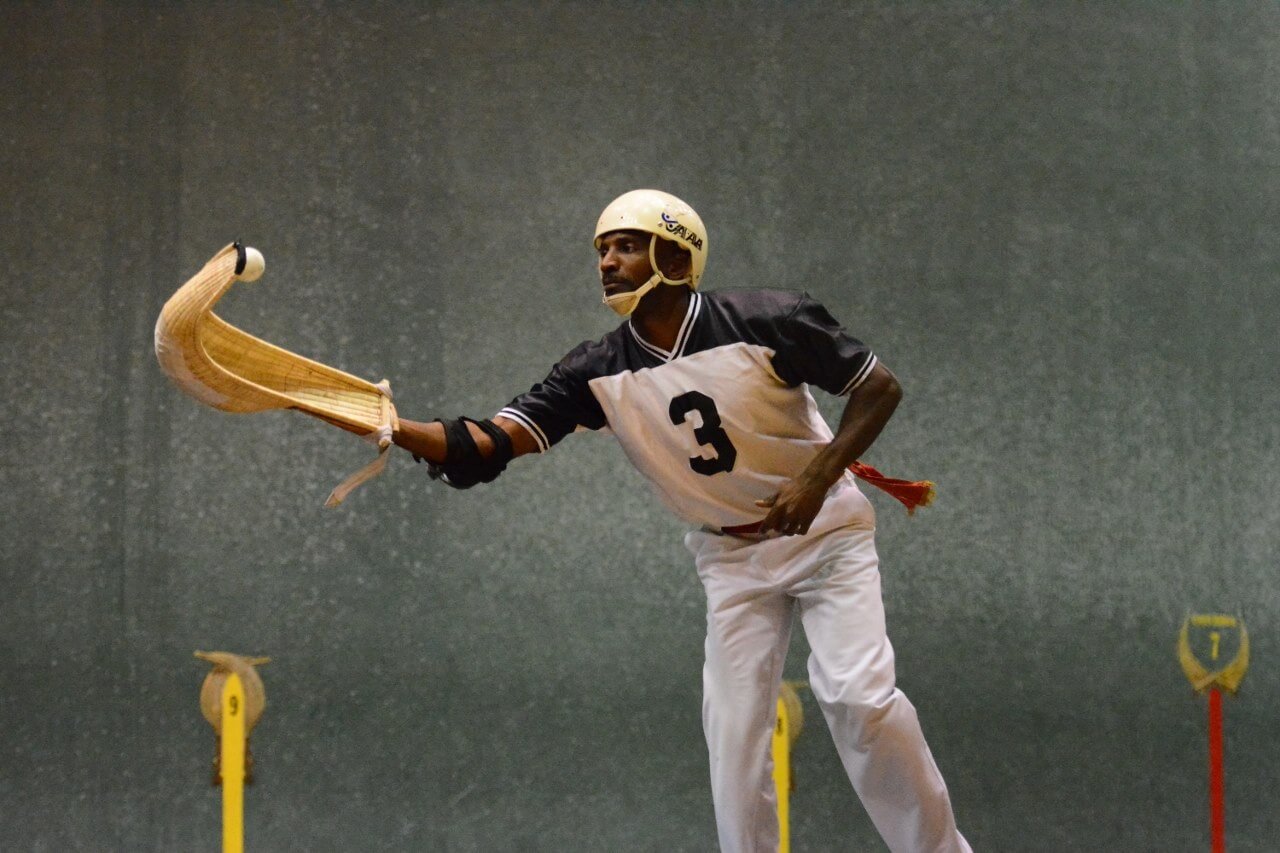What is Jai Alai? Information on Jai Alai game, history and rules. How to play Jai Alai. In this post, we’ll explore the history and rules of Jai Alai, as well as the equipment used and the different strategies employed by players.

Source: wikipedia.org
Jai Alai; is a game played on a 3-walled court, in which players, using a wicker racket strapped to one arm, hurl a small ball against a wall. The object is to carom the ball off a wall in such a way that an opponent cannot return it, either on the fly or on first bounce. The ball is propelled at speeds up to 150 miles an hour. Though no one is certain when or where the game originated, some historians say it was invented by St. Ignatius of Loyola, the founder of the Jesuit order, in the Basque region of Spain in 1518. Today’s best players come from that region.
The words jai alai mean “merry festival” in the Basque language, yet in Spain the game is known as pelota, which means “ball.” Today the game is played in Spain, Mexico, France, Italy, parts of South America, the Philippines, and the United States. In the United States, jai alai is most popular in Florida, where it flourishes as a spectator sport. The games are played in arenas known as frontons. Pari-mutuel betting is permitted, and all players are professionals.
The length and width of a jai alai court varies, but a typical one is 176 feet long and 95 feet wide (the width includes a 20-foot-wide strip that is foul territory), bounded on the front (frontis), back (rebote), and one side (lateral) by 44-foot-high concrete walls. A clear-vision screen runs the length of the court on the open side, behind which spectators view the game.
The ball (pelota) is 2 inches in diameter and has a rubber core, around which a layer of thin linen cord is wound by hand. It is covered with tightly sewn goatskin. The ball weighs about 4.V2 ounces and is extremely hard. Each player wears on one hand a specially curved basket, called a cesta. The average cesta measures 2 feet in length and has a built-in glove at its base. The frame is made of thin Spanish chestnut, over which is woven a strong Spanish reed. Players snare the ball in the cesta and hurl it with a powerful overhand or sidearm motion. All the beauty and flow of the game is built around the various manners in which the ball is caught, drawn back, and returned against the wall.
Jai alai is played in singles (up to eight individuals) or doubles (up to eight 2-man teams) matches. Play begins with a serve by one player who stands about three fourths of the way back in the court. He bounces the ball 011 the court, catches it in the cesta, and whips it against the frontis. The ball must rebound to the court between the fault line and the pass line, an area that occupies, roughly, the second quarter of the court from the front wall. Subsequently the ball may also be played off the side and back walls. In any case, players catch the ball, either on the fly or after one bounce, and return it to the frontis on the fly, striking it in fair territory. (The out-of-bounds lines are marked in red.) Should a player fail to do this, or should he overserve or underserve his opponent, he loses the point.
When individuals or teams compete, the one winning the point stays on court to meet the next in line; the loser retires to the waiting bench until his turn to enter the court comes up again. The number of points needed to win is one less than the number of players or entries. For example, with eight men playing, the game proceeds as follows: player in post position 1 meets player in position 2 and, should 1 win a point, he meets 3. If 3 should win the point, he then plays 4, and so on. Each player who fails to score retires to the bench to wait his next turn. The winner is the one who first scores 7 points. The same procedure is followed when there are eight teams of two.